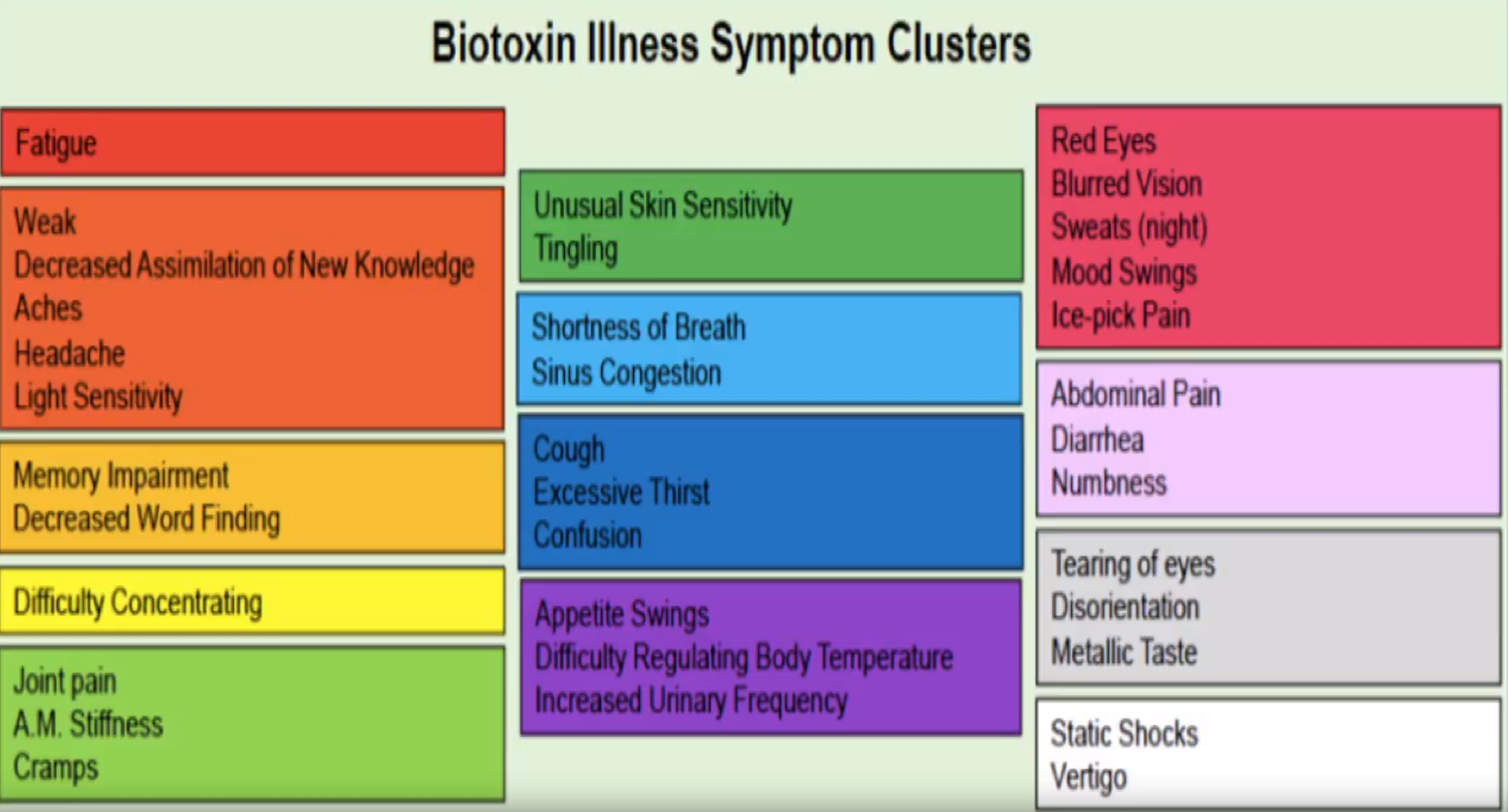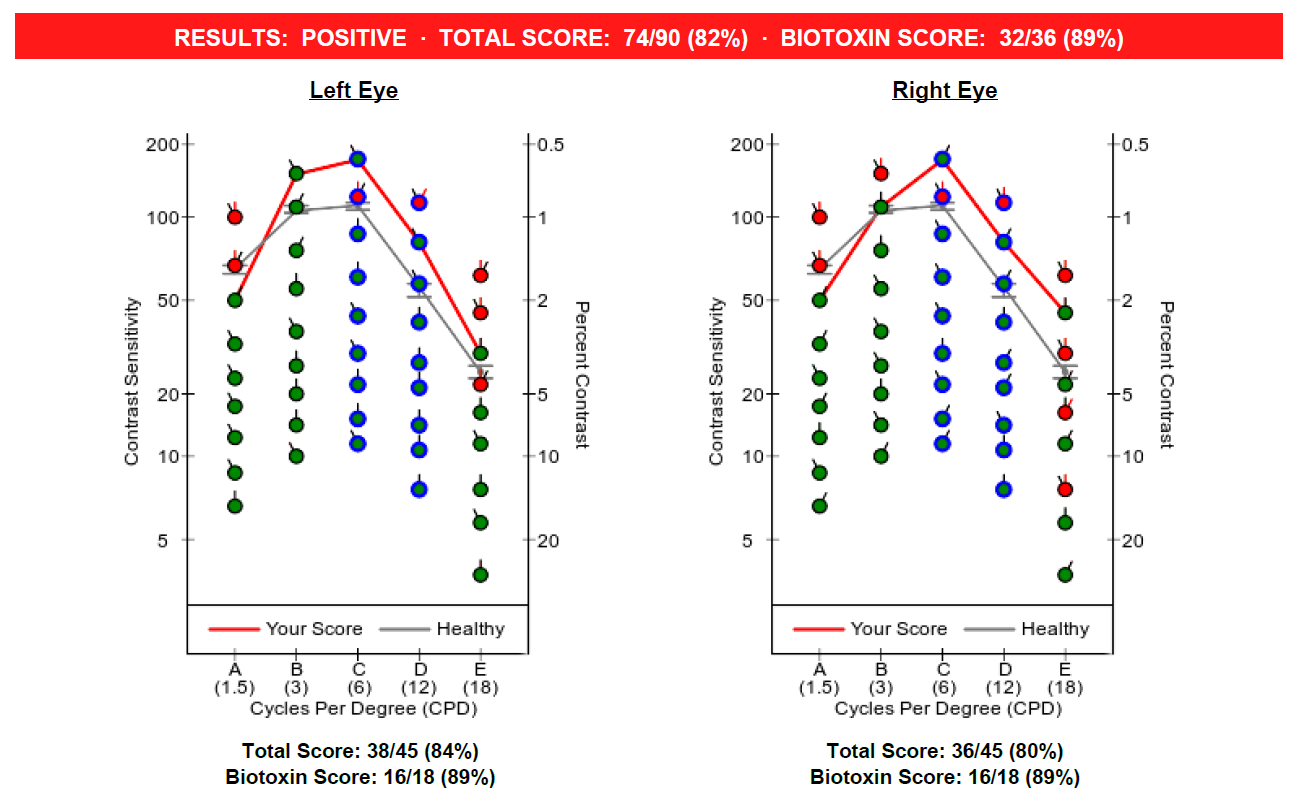Coaching
CIRS Diagnosis
Diagnosing Chronic Inflammatory Response Syndrome (CIRS) is a multi-step process. CIRS can co-exist with other conditions, so differential diagnosis is always important.
Although it's best to be guided through the process by a professional, it's possible to take a few of the first diagnostic steps yourself. Let's start with the chart below (click on the image for a larger view).
Each different-colored block contains a list of symptoms grouped together as a cluster. Count how many clusters you have symptoms in. For example, if you are Weak and have Aches, those are both in the Orange block, so that would count as 1 cluster. If you have symptoms in 8 or more colored clusters, there's a good chance you have CIRS.
The next step is to take the Visual Contrast Sensitivity (VCS) test. This can be done online at either vcstest.com or survivingmold.com.
In order for the test to be valid, your corrected vision needs to be 20:50 or better in at least one eye. Don't bother testing an eye with weaker vision or you may end up obscuring the true results. You should be sure to take the test in a reasonably well-lit room (not in the dark). You should also use a video monitor less than 5 years old. Older monitors lose contrast, and won't be able to display the test correctly. While taking the test, you need to keep your eyes at the recommended distance from the screen. Use a tape measure or similar to be sure.
At vcstest.com, it's possible to take your first test for free. If you do that, be sure to capture a screenshot of the results at the end. With paid tests, they will email your results to you as a PDF that you can share with your health coach or doctor.
If you fail the VCS test (in either eye), it's likely that some part of your optical system is inflamed.
Here's an example of what the VCS results looked like for me when I first took the test (and failed with a Positive result):
Your score is the red line. In healthy people, the red line will be at or above the grey line in every column, for both eyes.
Note that it's possible to have a good VCS test (a Negative result) and still have CIRS. In fact, that's expected as your treatment progresses.
With these two results in hand, the next phase of diagnosis involves a number of lab tests. These tests are important as part of the differential diagnosis process, and to help focus your treatment and track your progress.
Articles
diagnosis
detective
MCS/EI/CFIDS
protocol
oxygen O2MT
Healthy House
guidelines
location
foundation
floorplan
framing
flooring
electrical
plumbing
roofing
windows
siding
kitchen
Supplements
carnitine
cetyl myrist.
coq10
d-glucarate
glucosamine
IP6
Lipoic Acid
Vitamin E

